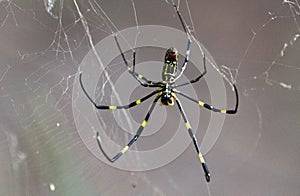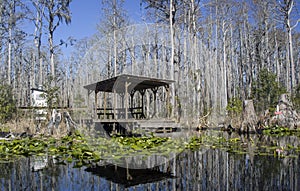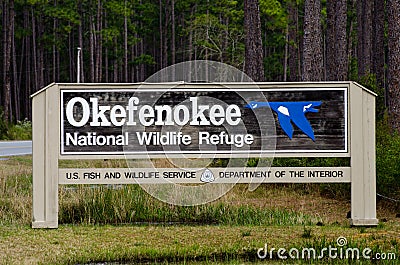UGA working to conserve, protect native alligators
UGA TODAY, August 28, 2020 by Kelly Simmons
See full article here: https://news.uga.edu/uga-working-protect-native-alligators/
The Okefenokee Swamp project focuses on management, education efforts

© Photographer: William Wise | iNat observation: 31345492
A partnership between University of Georgia researchers and the Okefenokee Swamp Park focuses on conservation and education efforts needed to maintain the swamp’s native alligator population, which is vital to the economic vitality of the region.
On Aug. 27, UGA’s Marine Extension and Georgia Sea Grant and the Okefenokee Swamp Park signed a commitment to continue its Alligator Education and Research Project, work that informs the OSP on conservation and management of the swamp, provides a better understanding of alligators and enhances wildlife education.
“The American alligator remains a conservation concern for a number of reasons, including human persecution and loss of native habitat,” said ecologist Kimberly Andrews, a faculty member with UGA Marine Extension and Georgia Sea Grant. “It is important for us to understand how these reptiles are adapting to survive in a human-dominated environment.”
Using satellite tags and cameras, Andrews and her team at UGA have tracked seven adult alligators in the swamp, observing interactions between the sexes and age classes, courtship between males and females, maternal care and interaction with other species, such as bears or otters.
So far, their research has shown that adult females and their guarded young, ages 1 to 3 years, are typically the most visible while the males are on the move and the mid-size subadults are more covert. Alligator activity and their visibility in the swamp is influenced by social structure and the presence of dominant individuals and changes in environmental conditions, such as temperature and rainfall.
Alligators vital to ecosystem
Alligators are apex predators, consuming a diversity of food sources and regulating prey populations. At the swamp, researchers have seen that a single adult alligator may eat prey that range in size from a moth to a deer. When alligators are lost from a system, this balance is lost and the ecosystem instability impacts many other species, including people who rely on predators to manage prey populations, such as deer, that pose risk to our safety when overabundant.
Alligators are the engineers of their economy, creating habitat that is used by other smaller animals. During drought, alligators create “wallows” or use den sites that retain water after it becomes scarce in other areas. These wallows can be critical for breeding habitat for frogs. The loss of alligators in some ecosystems has contributed to subsequent declines in amphibian populations in many of their habitats where they have been removed.
The Okefenokee is the largest blackwater swamp in North America, serving as the headwaters of the St. Marys and Suwanee rivers. Most of the swamp is located in Southeastern Georgia and is considered one of the seven natural wonders of the state. Protected largely by the Okefenokee National Wildlife Refuge and the Okefenokee Wilderness, the swamp has an array of habitats including cypress swamps, peat bogs, marshes, open lakes and wooded hammocks. The diversity of ecosystems encompasses an assortment of over 620 plant species (including four carnivorous plant species), 39 fish, 37 amphibian, 64 reptile, 234 bird and 50 mammal species.















